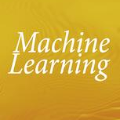Hypotension in critically ill ICU patients is common and life-threatening. Escalation to catecholamine therapy marks a key management step, with both undertreatment and overtreatment posing risks. Most machine learning (ML) models predict hypotension using fixed MAP thresholds or MAP forecasting, overlooking the clinical decision behind treatment escalation. Predicting catecholamine initiation, the start of vasoactive or inotropic agent administration offers a more clinically actionable target reflecting real decision-making. Using the MIMIC-III database, we modeled catecholamine initiation as a binary event within a 15-minute prediction window. Input features included statistical descriptors from a two-hour sliding MAP context window, along with demographics, biometrics, comorbidities, and ongoing treatments. An Extreme Gradient Boosting (XGBoost) model was trained and interpreted via SHapley Additive exPlanations (SHAP). The model achieved an AUROC of 0.822 (0.813-0.830), outperforming the hypotension baseline (MAP < 65, AUROC 0.686 [0.675-0.699]). SHAP analysis highlighted recent MAP values, MAP trends, and ongoing treatments (e.g., sedatives, electrolytes) as dominant predictors. Subgroup analysis showed higher performance in males, younger patients (<53 years), those with higher BMI (>32), and patients without comorbidities or concurrent medications. Predicting catecholamine initiation based on MAP dynamics, treatment context, and patient characteristics supports the critical decision of when to escalate therapy, shifting focus from threshold-based alarms to actionable decision support. This approach is feasible across a broad ICU cohort under natural event imbalance. Future work should enrich temporal and physiological context, extend label definitions to include therapy escalation, and benchmark against existing hypotension prediction systems.
翻译:暂无翻译




